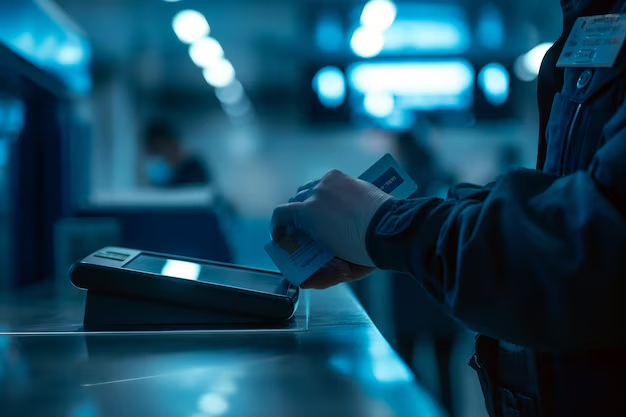Does Bank of America Accept Passkeys? Everything You Need to Know
In an era where digital transformation continually reshapes how we interact with financial institutions, banks are consistently at the forefront of implementing the latest technologies to enhance customer experience. One such innovation is the use of passkeys, a modern approach to secure online access. But what exactly are passkeys, and does one of the nation's largest financial institutions, Bank of America, accept them? Let's delve into this topic comprehensively, exploring what passkeys are, how they function, and the implications for Bank of America customers.
What Are Passkeys?
Passkeys are a secure and user-friendly alternative to traditional passwords. They leverage biometric authentication — such as fingerprint, face recognition, or other device-based verification methods — to confirm a user's identity. This method reduces the risk associated with password management, such as weak passwords and phishing attacks, making online interactions more secure.
How Do Passkeys Work?
- Biometric Authentication: Utilizes your unique biological traits, ensuring a higher level of security.
- Cryptographic Keys: Passkeys work through a pair of cryptographic keys – a public key stored on the server and a private key kept on the user's device.
- Device Integration: Seamlessly integrates with your device's built-in security features, providing ease of use without the need to remember complex passwords.
Why Are Passkeys Becoming Popular?
The main reason behind their growing popularity is the promise of increased security combined with a simplified user experience. No more forgotten passwords or resets; your device becomes the secure key to your online accounts.
Bank of America's Stance on Passkeys
As a leading financial institution, Bank of America is known for adopting cutting-edge technology to improve client security and banking convenience. However, as of the latest updates, Bank of America has not officially integrated passkey technology across its platforms. The bank remains vigilant about emerging trends and thoroughly examines technologies for practicality, security, and feasibility before potential implementation.
Current Authentication Methods at Bank of America
- Two-Factor Authentication (2FA): Enhances security by requiring users to verify their identity through an additional step beyond passwords.
- Biometric Options: Customers can access their accounts using fingerprint or facial recognition in the mobile banking app.
- Secure Access Codes: Used during login for an additional security layer, particularly for new device recognition.
Potential Challenges in Implementing Passkeys
- Infrastructure Overhaul: Integrating passkeys requires significant changes to existing security systems and infrastructure.
- User Adaptation: Transitioning customers to new authentication methods can be a gradual process due to varying levels of digital literacy.
- Regulatory Compliance: Ensuring new technology complies with financial regulations and standards is a crucial step.
The Future of Passkeys in Banking
While Bank of America hasn't adopted passkeys yet, the technology's benefits align well with the growing demand for enhanced digital security and user convenience. The trend is shifting towards more secure, reliable, and user-friendly systems in finance.
What Can Customers Expect?
- Increased Security: As banks continue to explore secure authentication options, passkeys could provide a robust solution against digital threats.
- Seamless Experience: With the elimination of password-related hurdles, passkeys could offer a seamless, hassle-free banking experience.
- Gradual Adoption: Customers may see phased-in changes, starting with optional passkey use for tech-savvy users before broader implementation.
Comparing Passkeys to Current Methods
| Feature | Traditional Passwords | Passkeys |
|---|---|---|
| Security | Vulnerable to phishing and hacks | Biometric and cryptographic security |
| User Experience | Requires memory and resets | Seamless and device-integrated |
| Adoption Speed | Universally used | Gaining traction with new tech |
Pros and Cons of Passkeys in Banking
Advantages:
- Strengthened Security: Passkeys inherently bolster security by eliminating password vulnerabilities.
- Convenient Access: Customers can quickly and easily access their accounts without remembering complex passwords.
- Reduced Phishing Risk: By using biometric data and cryptographic keys, passkeys can significantly reduce phishing vulnerabilities.
Disadvantages:
- Initial Setup: Implementing a new system involves integration challenges and customer education.
- Device Dependency: Passkeys require specific device capabilities, which might limit some users.
- Privacy Concerns: As with any biometric data, ensuring privacy and secure storage is paramount.
Practical Tips for Secure Banking
While waiting for new systems like passkeys, here are some tips to maintain secure banking practices:
- Enable Two-Factor Authentication: Always use 2FA for an added layer of security.
- Update Software Regularly: Keep your device and apps up-to-date to protect against threats.
- Monitor Account Activity: Regularly check your bank statements for unauthorized transactions.
- Beware of Phishing Scams: Be cautious of suspicious emails or messages asking for your login information.
Key Takeaways 📌
- Passkeys offer greater security and ease-of-use, eliminating password-related issues.
- Bank of America currently does not support passkeys, but continues to evaluate new security technologies.
- Customers should continue using existing security measures like 2FA for protection.
- The progress of passkey adoption in banking will depend on technological, infrastructural, and regulatory developments.
Embracing advanced authentication methods like passkeys could transform banking into a more secure and user-friendly experience. While Bank of America has not yet implemented this technology, staying informed about potential changes ensures you are prepared to make the most out of the evolving digital banking landscape.

Related Topics
- a Bank Of America Atm
- a Que Hora Cierran Bank Of America
- Are Bank Of America Atms Open 24/7
- Are Bank Of America Points Good
- Are Bank Of America Points Transferable
- Cómo Llamar Servicio Al Cliente Bank Of America En EspaÃ+/-ol
- Can Bank Of America Cash Checks
- Can Bank Of America Exchange Currency
- Can I Cash a Check At Bank Of America
- Can I Exchange Currency At Bank Of America